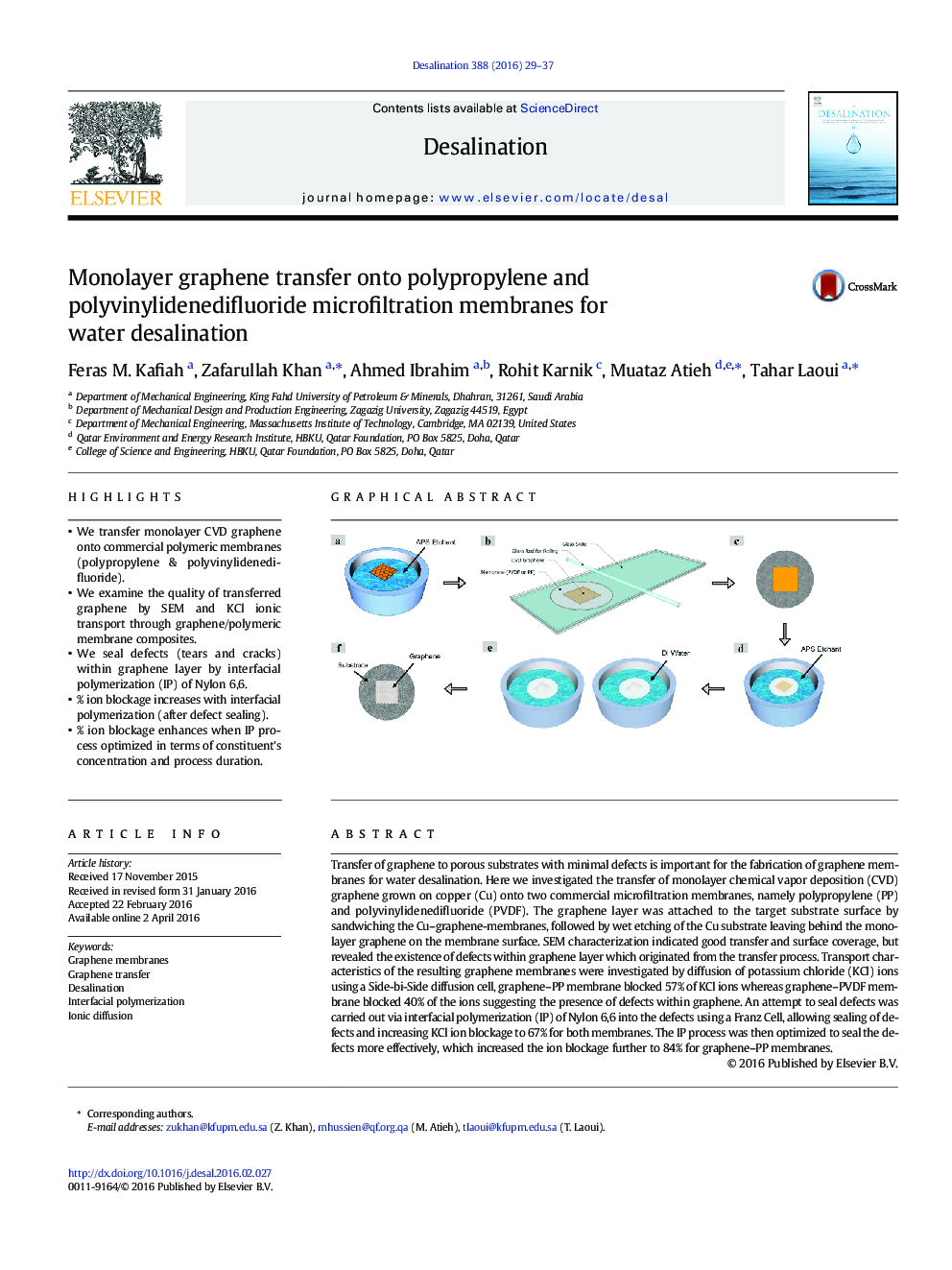| کد مقاله | کد نشریه | سال انتشار | مقاله انگلیسی | نسخه تمام متن |
|---|---|---|---|---|
| 622796 | 1455307 | 2016 | 9 صفحه PDF | دانلود رایگان |
• We transfer monolayer CVD graphene onto commercial polymeric membranes (polypropylene & polyvinylidenedifluoride).
• We examine the quality of transferred graphene by SEM and KCl ionic transport through graphene/polymeric membrane composites.
• We seal defects (tears and cracks) within graphene layer by interfacial polymerization (IP) of Nylon 6,6.
• % ion blockage increases with interfacial polymerization (after defect sealing).
• % ion blockage enhances when IP process optimized in terms of constituent's concentration and process duration.
Transfer of graphene to porous substrates with minimal defects is important for the fabrication of graphene membranes for water desalination. Here we investigated the transfer of monolayer chemical vapor deposition (CVD) graphene grown on copper (Cu) onto two commercial microfiltration membranes, namely polypropylene (PP) and polyvinylidenedifluoride (PVDF). The graphene layer was attached to the target substrate surface by sandwiching the Cu–graphene-membranes, followed by wet etching of the Cu substrate leaving behind the monolayer graphene on the membrane surface. SEM characterization indicated good transfer and surface coverage, but revealed the existence of defects within graphene layer which originated from the transfer process. Transport characteristics of the resulting graphene membranes were investigated by diffusion of potassium chloride (KCl) ions using a Side-bi-Side diffusion cell, graphene–PP membrane blocked 57% of KCl ions whereas graphene–PVDF membrane blocked 40% of the ions suggesting the presence of defects within graphene. An attempt to seal defects was carried out via interfacial polymerization (IP) of Nylon 6,6 into the defects using a Franz Cell, allowing sealing of defects and increasing KCl ion blockage to 67% for both membranes. The IP process was then optimized to seal the defects more effectively, which increased the ion blockage further to 84% for graphene–PP membranes.
Figure optionsDownload as PowerPoint slide
Journal: Desalination - Volume 388, 15 June 2016, Pages 29–37
